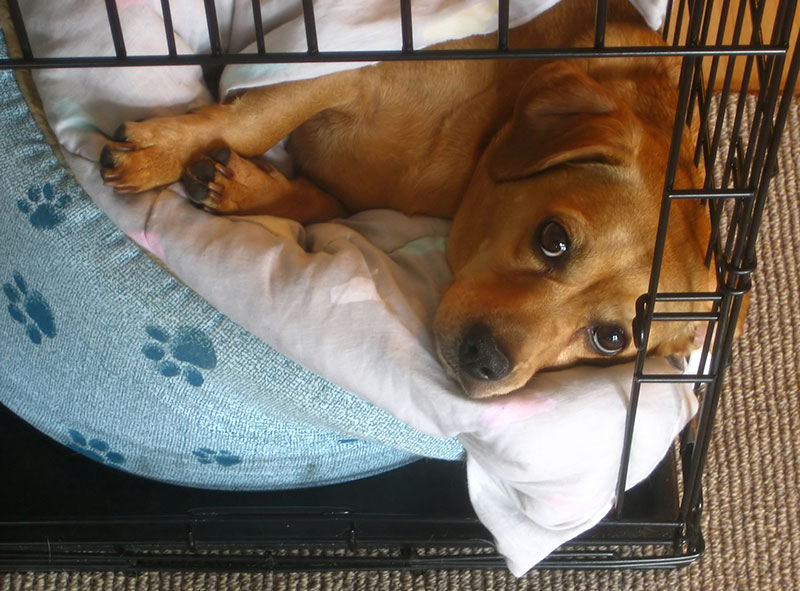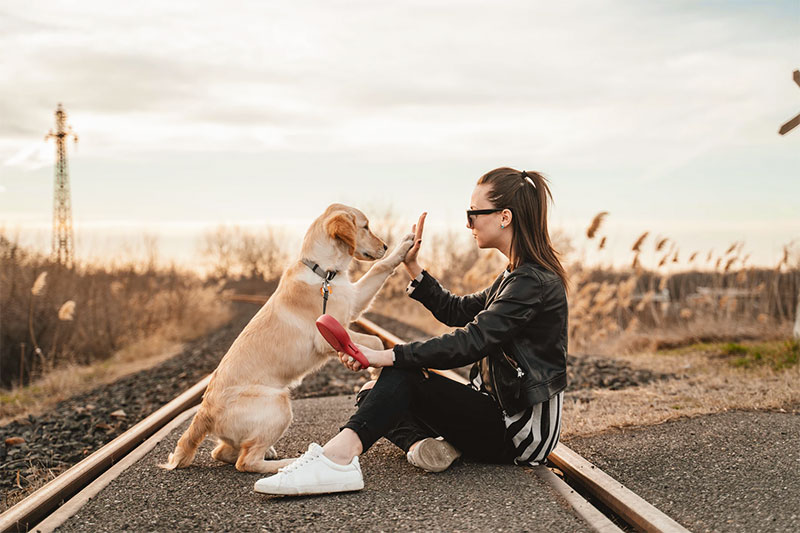Training a Puppy
Part 2
Congratulations on making it to the second part of the article series “Training a Puppy”. In the first part, we discussed a few important training tips that included helping your puppy recognize their name, giving them a new collar, and teaching them when they should go outside. Now that you are familiar with some basic training tips, it’s time to learn how you can make your puppy more obedient. Obedience is key to having a happy pet/owner relationship. Here, we’ll dive into some helpful ways you can teach your puppy to understand and obey your commands.
Learning How to Crate your Puppy
Many dog owners reject the idea of using crates for their furry friends. However, professional trainers and veterinarians have long accepted crating as one of the quickest and least stressful ways to reinforce desirable behavior in dogs. Dogs are pack animals, and they instinctively have an urge to possess their own special place or “den”.

Though, it’s important to never take advantage of this instinct by forcing your puppy inside their crate as a form of punishment. Instead, place a soft blanket inside the crate and leave the door open as you introduce your puppy to their new den. This will allow them to grow comfortable with their crate and come and go at their leisure. Soon, you’ll be able to leave your puppy in the crate if you anticipate being away for a few hours.
Remember that puppies should only be left in a crate for a maximum of 3-4 hours. Puppies can’t hold their bladders very well, and being in their crates for too long can cause depression and anxiety.
Keeping Communication Consistent
Although they are young, puppies are very smart and are capable of molding their own behavior to make you happy. The only way your puppy will do this is if you apply consistent communication between their actions and your reaction.
If your puppy does something right or desirable, praise them enthusiastically and reward them. If they do something wrong, make it clear that you are not happy by giving them a firm “no” and praise them when they correct their behavior.

For example, if you don’t want your puppy on your furniture say “no” loudly and guide them off every time they climb on. Then, praise them when they climb unto the floor. Puppies are great learners and understand your body language, but it can take them a few tries to fully understand when you don’t appreciate their behavior.
Maintaining consistent communication makes it easier for them to understand what you’re saying and apply your commands in the future.
Correcting Puppy Mistakes
While puppies are brilliant learners, they sometimes have an urge to do things that are clearly not okay, such as biting and destroying furniture. It’s helpful to remember that puppies aren’t spiteful. If they are performing a destructive act, they probably got the idea that it was acceptable.
To eliminate this type of behavior, you’ll have to catch your puppy in the act and immediately correct it. For example, the incorrect approach to discipline your puppy is not to yell at them or crate them if you’ve discovered a severely damaged pillow under your sofa. That’s because dogs can’t connect a punishment to an action that may have happened a few hours ago.
Instead, you must catch your puppy performing a bad deed in the act. Just like we’ve mentioned above, remember to give them a firm “no” and praise them abundantly for responding to your command.
For More Information
If you have questions about this topic or general questions about pet care, you can contact Kara Jenkins, Owner of TLC House & Pet Sitting. We are also available by email at info@tlcpetsitter.com. View more of our articles on pets here.
If you have questions about this topic or general questions about pet care, you can contact Kara Jenkins, Owner of TLC Pet Sitter. We are also available by email at info@tlcpetsitter.com. View more of our articles on pets here.
